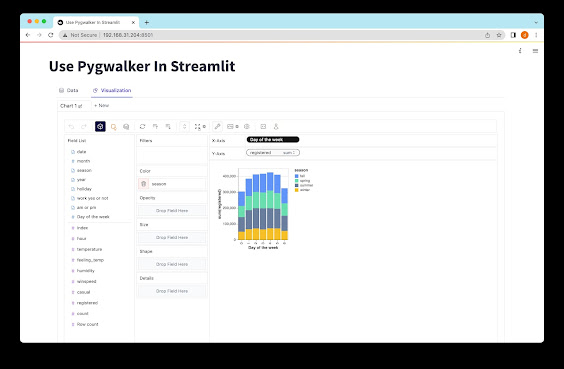Introduction to Grafana
Data visualization is a key aspect of modern data management. Grafana is a popular and powerful open-source data visualization platform for creating graphs, dashboards and alerts. It supports various data sources such as Prometheus, InfluxDB, Elasticsearch, Graphite and many others. Grafana is widely used by system administrators, DevOps engineers, developers and data analysts. In this article, we will explore some of the key features of Grafana and how it can help you visualize and analyze your data effectively.
Key Features of Grafana
1. Easy Installation and Setup
Grafana can be installed on different operating systems like Linux, Windows, and MacOS. You can also install Grafana on Docker or Kubernetes. Grafana can be installed and set up quickly without any difficulty. Documentation is available on the official website for various installation options.
2. Adaptable Data Connection
Grafana supports multiple data sources such as Prometheus, InfluxDB, Elasticsearch, Graphite and many others. It is also possible to create a custom data source, Grafana provides its own API, allowing developers to integrate their own data sources without limitation. Grafana allows you to aggregate data from different data sources and combine them into a single view.
3. Attractive and customizable interface
Grafana allows users to create highly customizable and attractive graphs, dashboards, and alerts. Its UI is intuitive making it user-friendly. Additionally, Grafana offers many charting plugins, customizable templates and even allows one to add their own custom dashboards.
4. Advanced Alerting System
Grafana provides an advanced alerting system that allows users to set custom thresholds for different values. It supports different alert management systems like email, Slack, PagerDuty, and many others. Grafana’s alerting system provides service monitoring, anomaly detection, and proactive alerting to help teams work fast proactively.
5. High Availability
Grafana supports clustering, which allows multiple instances to run in parallel providing high availability and load balancing. Grafana’s clustering system is compatible with Kubernetes and Docker.
6. Collaboration
Grafana offers collaboration features like sharing and templating. Users can easily collaborate with colleagues by sharing their dashboards, adding comments to the panels, and providing feedback. Additionally, some corporate entities offer Grafana as a service, scaling out this release, thus providing offerings to the end users.
7. Extensive Community
Grafana’s large and active community provides an extensive range of plugins, third-party tools, and integrations. The community support provides solutions for almost any requirement one may have while utilizing Grafana.
Use Cases of Grafana
1. Infrastructure Monitoring
In infrastructure monitoring, Grafana connects to different monitoring solutions like Prometheus, Nagios, and Zabbix and tracks resource usage, network performance, server uptime, and assesses the overall health of the infrastructure. Grafana helps ensure quick root cause analysis and subsequent remediation of any issues that may arise in an infrastructure monitoring environment.
2. DevOps
DevOps involves continuous integration, delivery, and deployment, which means that developers need a reliable tool that can monitor all the changes during the pipeline. Grafana can visualize and monitor the state of an application, deployment, and infrastructure. Grafana can be easily integrated with CI/CD tools and orchestrators to provide a real-time insight into the deployment process and identify areas that require optimization.
3. Business Analytics
In today’s data-driven world, analytics is the key to understanding your business and its operation. Grafana can be used to track your business relevant data affecting the growth and success of your business. Grafana assists in detecting trends and issues within a business and its operation and makes it easy for organizations to interpret business data in a comprehensible manner.
4. IoT Analytics
Grafana is also used in the Internet of Things (IoT) sector to visualize and monitor data generated from sensors, devices, and applications in real-time. Grafana helps analyze data from different sources such as sensors and provides actionable insights at scale.
Conclusion
Grafana is an exceptional data visualization tool popular among system administrators, DevOps engineers, developers, and data analysts. It provides an extensive range of features, plugins, and integration with multiple data sources. Grafana offers an intuitive user interface, advanced alerting system, and collaboration features like sharing and templating. The community provides a wealth of knowledge which makes Grafana a preferred tool for many businesses in this modern era of data. So, if you are looking for an easy to set up and manage open-source data visualization tool, then Grafana is an excellent choice.

Comments
Post a Comment